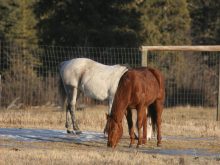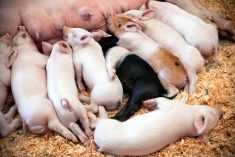RED DEER – Timing is crucial for preserving hay quality, says an American forage specialist.
Alan Rotz of the United States Department of Agriculture told the recent western dairy seminar in Red Deer that mowing late in the day may have some benefits because sugar levels are higher as photosynthesis slows at the end of the day, which in turn captures more carbohydrates.
However, weather can be variable so it is likely better to mow in the morning to obtain a full day of drying.
Read Also

Why selenium is still an important factor in horse health
Selenium is an essential equine trace mineral that supports antioxidant defense, muscle integrity, immune function, metabolism and thyroid activity.
Hay drying requires the removal of three tonnes of moisture per tonne of forage produced.
Rapid field curing preserves forages’ nutrient value, and a good conditioner can help preserve quality. Exposing the swaths to sunlight is the most effective way to dry before baling.
He recommended baling hay at about 18 percent moisture for low-density bales. High density bales need lower moisture content.
Rain damage may cause leaf loss and nutrient leaching into the soil.
Twenty-five millimetres of rain could result in dry matter losses of eight to 20 percent, as well as small protein loss and reduced energy and digestibility.
There are various implements to dry hay faster, including rolling or raking, but both cause leaf loss.
Forages should be stored properly to minimize nutrient losses.
Bales stored with a higher than desirable moisture content may be dried mechanically. Additives to preserve high moisture hay such as organic acid mixtures, anhydrous ammonia and microbial inoculants work well enough, but it is always better to store the hay dry.
For example, anhydrous ammonia is effective, but comes with human and animal safety concerns. It could be toxic to animals if applied at rates greater than three percent of hay weight.
Silage should be covered as soon as possible to prevent mould.
Silage treatments include bacterial inoculants, enzymes, acids, anhydrous ammonia and urea.
Good silo management can reduce loss and maintain quality. Rotz recommended rapid filling and packing for bunker storage and rapid covering to prevent quality loss.
Livestock nutritionist Doug Yungblut of Pioneer Hi Bred Ltd. said improperly stored silage can result in quality losses.
“If you don’t cover silage you’ll lose 33 percent of the dry matter,” he said.
“You can lose a lot of that value that you spent a lot of money to grow.”
Further value in the silage can be lost to mould growth that eats up the dry matter. Rotz said energy and fibre content are forages’ most important qualities. As fibre levels increase, energy levels decrease.
High quality forage is necessary for dairy cows in early lactation to maximize their milk production. Quality is less critical for dry cows or those in later stages of lactation.
“Economic value of good quality forage is very high,” he said.
“Lower quality forage can be improved with concentrates, up to a point.”















